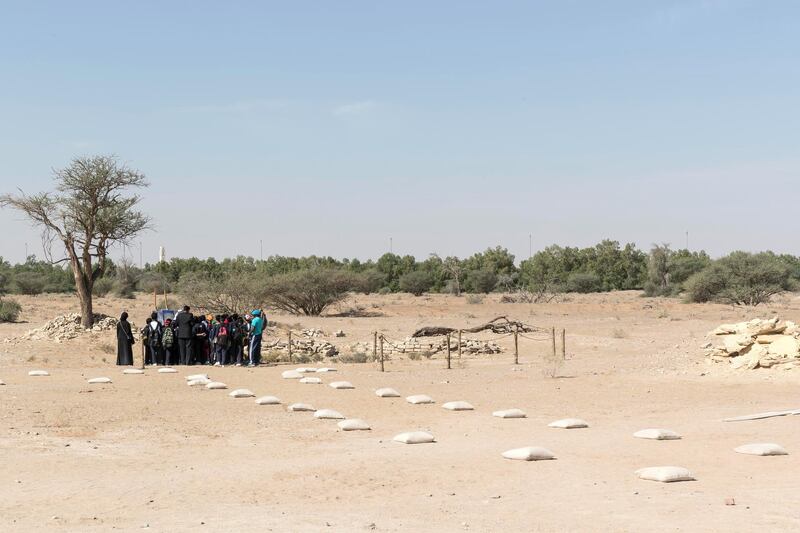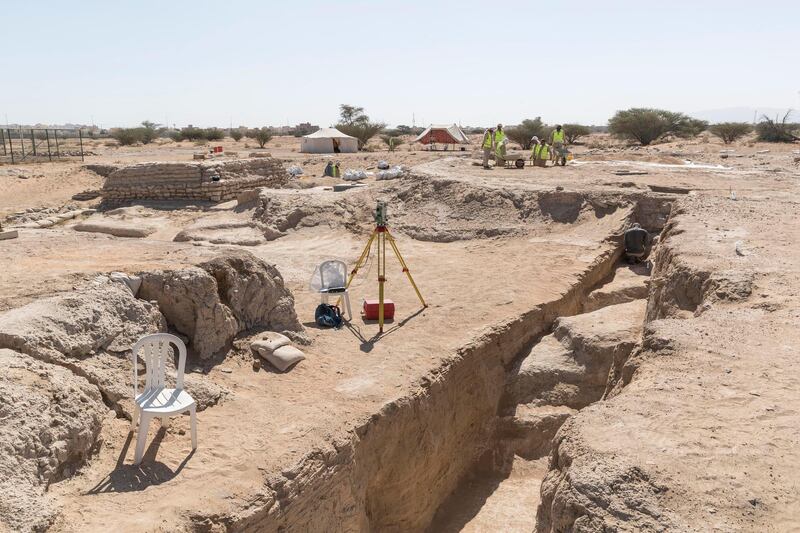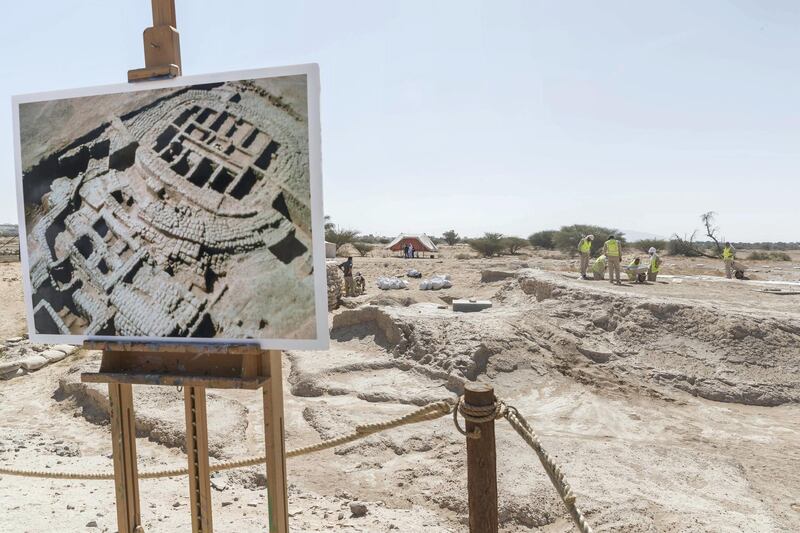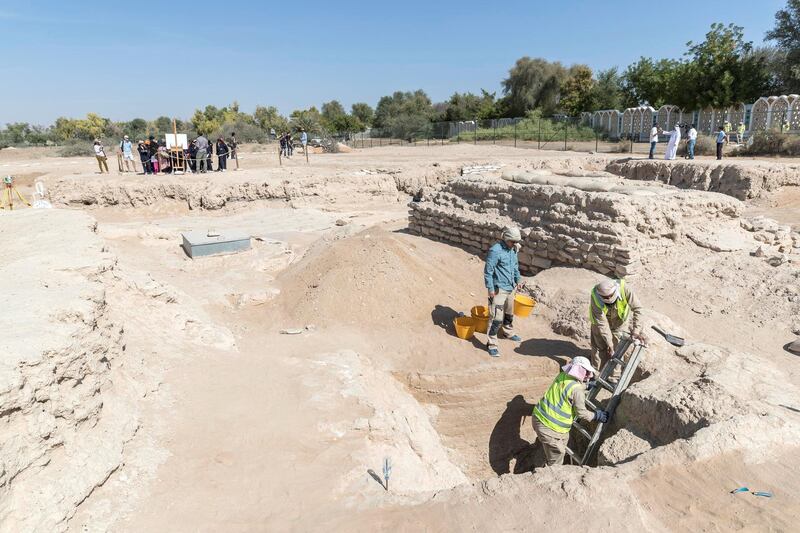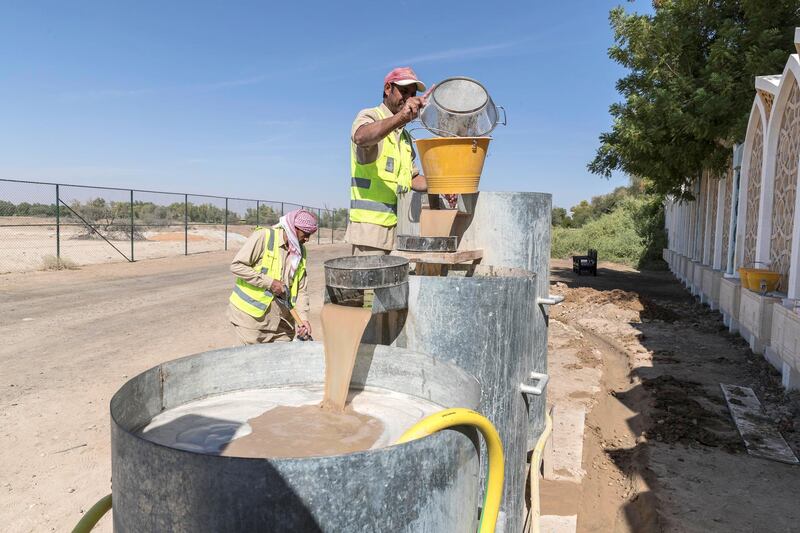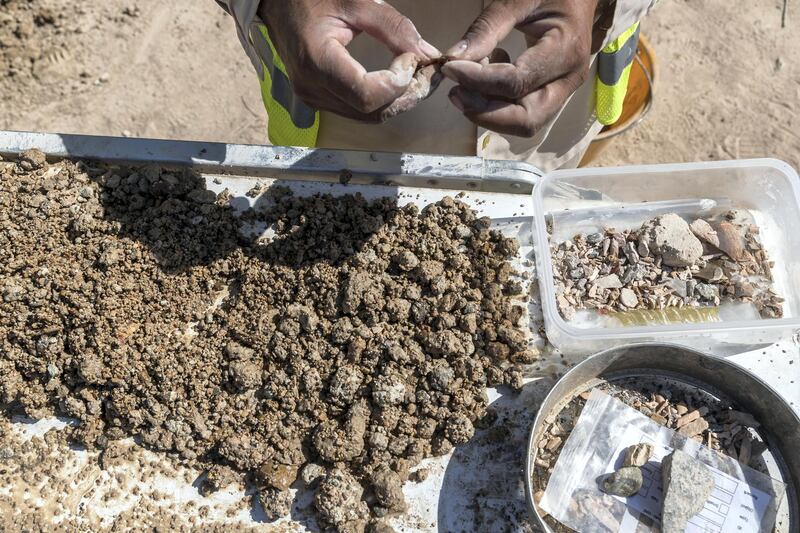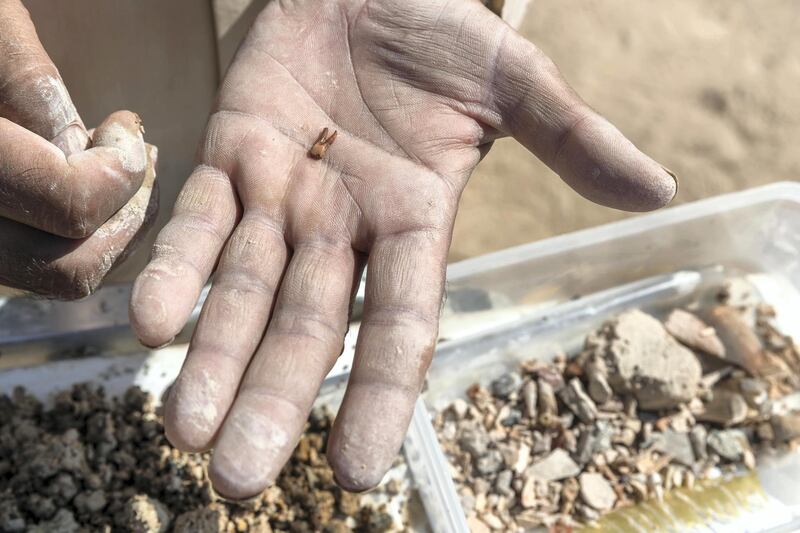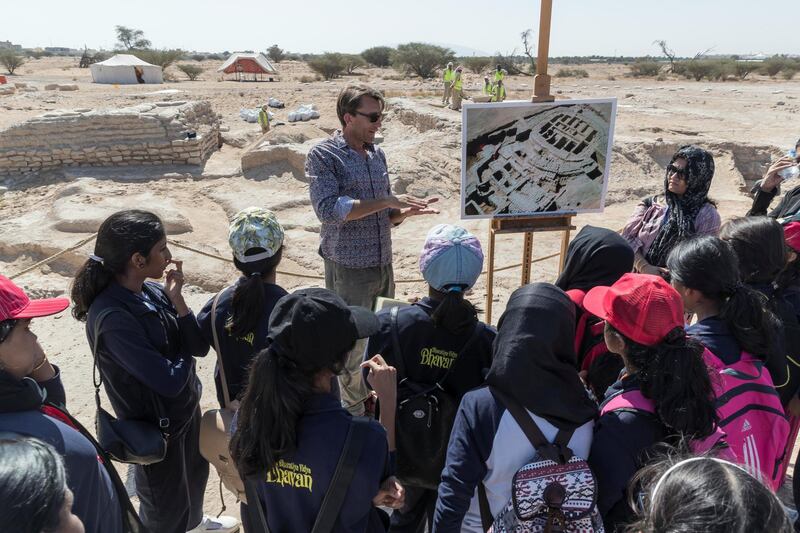One of the most important archaeological sites in the country has been opened to the public for the first time, promising visitors a first hand glimpse of the remains of a Bronze Age settlement.
Hili 8 forms part of the Unesco World Heritage sites of Al Ain. It was first excavated by French archaeologists in 1977.
They found the remains of barley, wheat and date palm proving the existence of an agricultural community dating back about 5,000 years.
Now Emirati archaeologists and international experts from the United States, Austria and France are back at the site since March.
And over the past two days, visitors were able to pass through several parts of Hili 8.
The long read: has a lost Arab capital been found on the Oman-UAE border?
Led by archaeologists Abdulla Al Kaabi and Omar Al Kaabi from the Department of Tourism and Culture – Abu Dhabi, they were able to view fresh excavations first hand; examine recently-discovered artefacts such as pottery fragments; and learn about a new water flotation system that separates ancient seeds; plant remains; and other archaeological material such as charcoal and bone fragments from trench sediment.
This device was not used in the original French digs and it is hoped this system will establish a firmer timeframe for when agriculture began there.
In addition, a 3D picture of soil and sand deposits that had built up in the area has also been made. This system has also recorded the many Bronze Age tombs in this area.
"Hili is really important. It's fundamental," said Omar Al Kaabi on Sunday.
"This site is very rich."
The early French teams also discovered bronze objects, pottery and the remains of cattle, goat and sheep.
Evidence for copper mining was established. Water was also a concern for these ancient people.
Earlier excavations show one well dug to a depth of four metres, with another well close by dug to a depth of nine.
However, a complete account of the French team's work at Hili 8 has never been published.
And it is hoped the new dig can build on this solid research.
The most visible parts remaining today are tomb structures and exposed building foundations.
Some of the other parts have been covered in to protect the fragile mud brick buildings.
________________
Hili 8
Magical history tour of Al Ain
Emirati students dig to understand the past at Hili Oasis archaeological site
Vision to see future in our past
________________
But thousands of years ago, it was a complex, active settlement that traded with other communities across the region and along the coast.
People lived here, dug wells, had workshops and practised agriculture. Great effort was put into the tombs – greater than the other buildings, according to one expert at the site on Sunday.
Jewellery, gifts and jars of pottery were placed with the dead and the outer face of the bricks were smoothed by workers using stone tools.
The new excavations are also targeting other parts of the site: the new work is very fine, very specific, very detailed.
Agriculture was believed to have started in the region around the mid-3rd millennium BC.
The earlier French teams established two radiocarbon dates that are 500 years older than this. Pottery found at Hili 8 also supports this theory but no architectural excavation has been found that backs this theory up. This is being looked into, while a second aim is to establish how long the site was used for.
Findings from the new archaeological excavations are expected to be published in the forthcoming months, while Hili 8's formal opening to the public is expected soon. But touring the site on Sunday, it's clear what it could become.
We are exploring how best to show the sites, said Omar Al Kaabi.
"We can't just uncover it. We need to preserve it so it won't be lost."
But Mr Al Kaabi envisions a system of shelters and regular monitoring.
"Before the site is open, we'll do a conservation plan making sure it's safely presented to the public," he said.
Al Ain has always been a place of culture.
It's now easier than ever for people to enjoy it such as at the recently-launched "weekends at the oasis"; the exhibitions at Al Jahili Fort; and soon, access to an archaeological site of vital importance to the history of the country.
